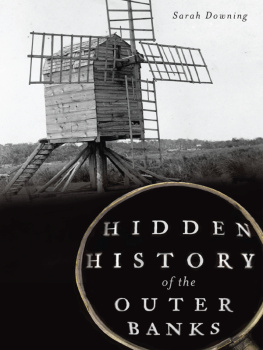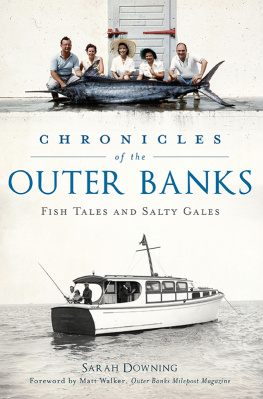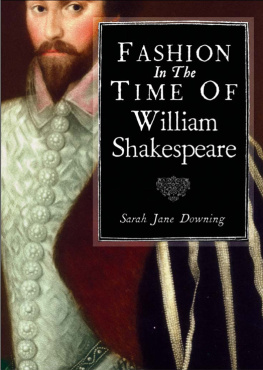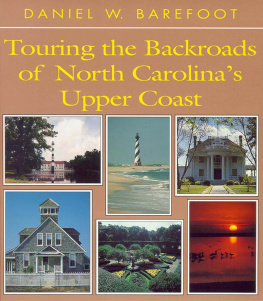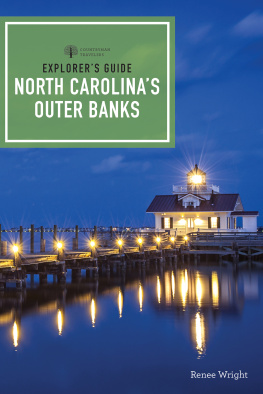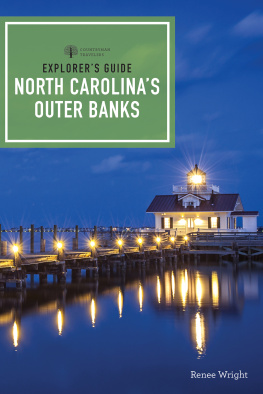

Promotional map of Dare County created by the Dare County Chamber of Commerce. The Outer Banks were originally promoted as the Dare Beaches or the Dare Coast. Outer Banks History Center Collections, circa 1931.

Published by The History Press
Charleston, SC 29403
www.historypress.net
Copyright 2013 by Sarah Downing
All rights reserved
Cover: Windmill on Hatteras Island. H.H. Brimley Collection, State Archives of North Carolina, circa 1900.
First published 2013
e-book edition 2013
Manufactured in the United States
ISBN 978.1.61423.947.5
Library of Congress CIP data applied for.
print edition ISBN 978.1.60949.914.3
Notice: The information in this book is true and complete to the best of our knowledge. It is offered without guarantee on the part of the author or The History Press. The author and The History Press disclaim all liability in connection with the use of this book.
All rights reserved. No part of this book may be reproduced or transmitted in any form whatsoever without prior written permission from the publisher except in the case of brief quotations embodied in critical articles and reviews.
CONTENTS
ACKNOWLEDGEMENTS
The bulk of Hidden History of the Outer Banks is based on a local history column that was published in the Outer Banks Sentinel newspaper in 2007, And There Was the Time, reprinted courtesy of the Sentinel. The column, although short-lived, was popular. Many of the articles needed updating, as change is inevitable along the Outer Banks, where tide and time keep a steady pace.
A whole heap of folks need to be thanked for their assistance with the publication of this book. Roanoke Island native Wynne Dough, former curator of the Outer Banks History Center in Manteo, North Carolina, shared many lesser-known stories about the Outer Banks and early in my career fostered my interest in the history of my adopted home. The late author and historian David Stick unselfishly shared his time and memories with me for many years. KaeLi Schurr, current curator of the Outer Banks History Center, nurtured me and encouraged me to write.
I am blessed to have a wonderful group of friends and mentors who are area natives or have been here for decades. They always have time for my questions, and if they dont have answers, they put me in touch with someone who might. Randell Holmes, Bill Harris, Lynda Midgett, LeVern Davis Parker and Danny Couch, I am truly richer for knowing you. Thank you.
My friend and fellow lover of history Penne Sandbeck is always willing to listen and offer advice and encouragement. Jami P. Lanier, archives technician for the National Park Service, allowed me to peruse the NPS Outer Banks Group photographs. David Miller shared his collection of memorabilia from The Lost Colony. LeVern Davis Parker shared her familys papers, scrapbooks and memorabilia. Sue Green Frazier helped with proofing, and Wilton C. Wescott provided my publicity photo.
J. Banks Smither, commissioning editor for North Carolina books at The History Press, was a joy to work with and made the project more fun than it shouldve been. I would also like to thank my husband, Steve, and my family for being supportive and putting up with the kooky writer in the family.
Kim Andersen and Mathew Waehner at the State Archives of North Carolina, Raleigh, and Stuart Parks and Tama Creef at the Outer Banks History Center were of great assistance in fulfilling photographic orders.
Finally, a special thank-you to a great group of ladies known as the Sistas. Their friendship, support, love and encouragement mean the world to me.
INTRODUCTION
North Carolinas Outer Banks, a slender string of barrier islands jutting into the great Atlantic, are today a bustling vacation destination and home to thousands. In the last twenty-five years, growth and development have transformed this once commercially modest area into a year-round economy offering amenities as varied as auto parts stores or reception venues for a destination wedding.
In addition to natural beauty bolstered by the sand, sea and sun, the Outer Banks have a remarkable history, beginning in 1584 when English explorers came and attempted to settle on Roanoke Island in a land race for New World territory fueled by Spains presence in Florida. Before 1584, Algonquian Indians were seasonal visitors, using the bounteous waters for sustenance and gathering foodstuffs from the maritime forests.
The sand banks, as they were first known, were well suited for raising livestock. Early settlers used the natural borders of the ocean and the soundsshallow bodies of water to the west. Navigating the sounds and inlets created a population of expert boatmen. As maritime trade grew just off the coast, the land and the seascape of the Outer Banks changed accordingly; shipwrecks, lighthouses and lifesaving stations became part of the identity of this special place.
A few years before the Wright brothers made their first flight at Kill Devil Hill in 1903, a group of men formed the Roanoke Colony Memorial Association with the goal of memorializing Roanoke Islands sixteenth-century English colonists and their mysterious disappearance in 1587. On December 17, 1903, the Wrights twelve-second flight became a new touchstone for the region. Dare County would adopt the motto Birthplace of a nation, birthplace of aviation.
With these two famous historic firsts, coupled with the recreational opportunities offered by the areas beaches, it wasnt long before folks in northeastern North Carolina realized that providing access to and opening up the Outer Banks would bring prosperity to the entire region. Although the Albemarles gentry had summered at Nags Head before the Civil War, the beginning of Outer Banks tourism began in the 1930s. Bridges were built, roads constructed, dance halls raised, land purchased and subdivided and chambers of commerce created as landowners, business operators, developers and new residents angled for visitors. The trend toward tourism took deep root; today, there are families who have vacationed on the Outer Banks for three or four generations.
This book is a collection of images and vignettes about this areas past. Some stories have national significance, and others can only be described as esoteric. Because it is so diverse, I believe that everyone can find interest in some aspect of Outer Banks history. New tales are always being discovered about the past, just as the Outer Banks windblown sands are always uncovering hidden treasures.
Part I
THE GOODLIEST LAND, 15841899
THE ORIGINAL NATIVES: CAROLINA ALGONQUIANS
Flashback to 1584. Captains Phillip Amadas and Arthur Barlowe have sailed from England on the first of the Roanoke Voyages. Upon arrival, they are greeted by local natives. Barlowe reported, The next day there came unto us divers[e] boats and in one of them the kings brother, accompanied with forty or fifty men, very handsome and goodly people and in their behaviour as mannerly and civil as any of Europe. His name was Granganimo, and the king is called Wingina, the country Wingandacoa (and now, by Her Majesty, Virginia).
Barlowe was two for three. He got the names of the native and king right; however, the country was not called Wingandacoa. This word actually meant, you wear nice clothes, which he had heard more than once from the Indians.
Next page
